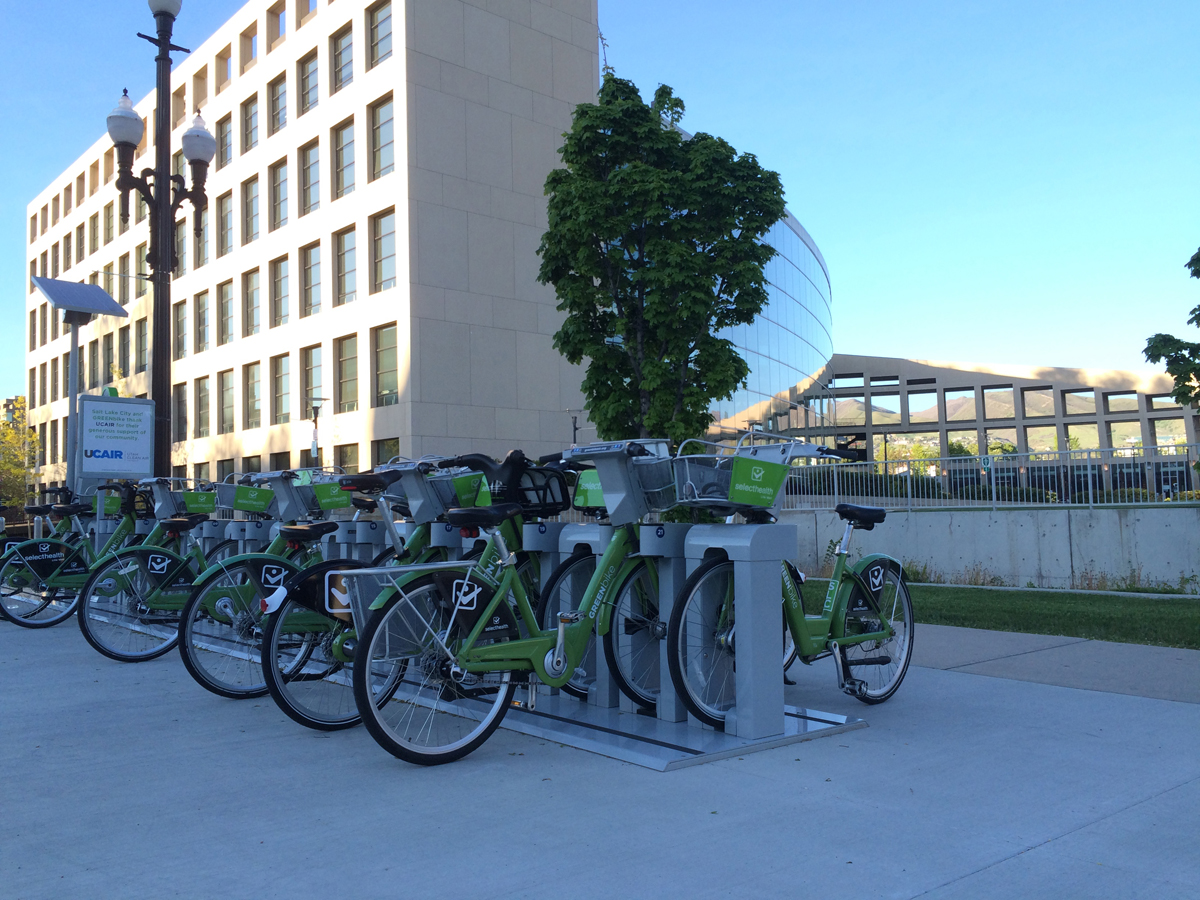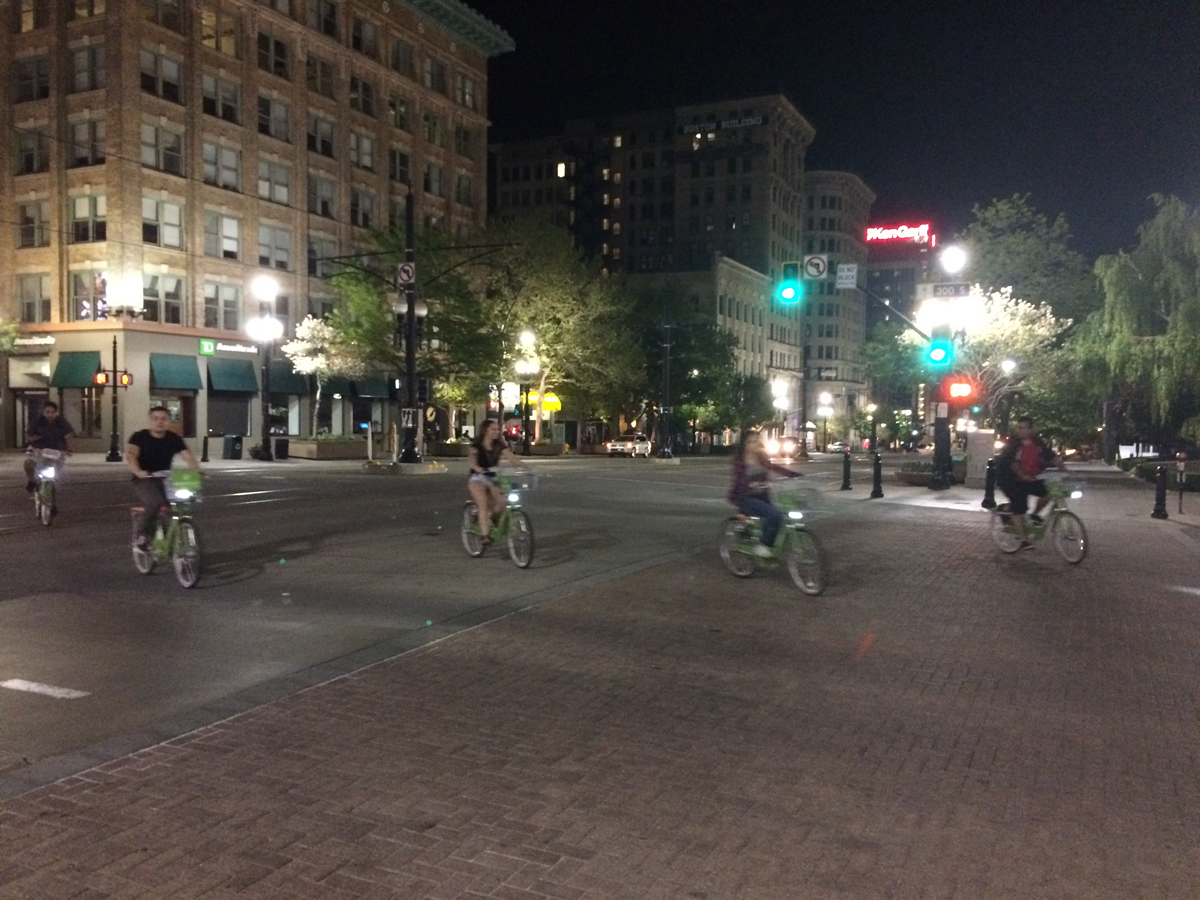No question that the bikeshare programs sprouting up across the USA have helped many people get around, often providing the last link between public transit and the office. But probably bikeshare systems disproportionately serve the relatively well-to-do who work in business areas where stations are located. Meanwhile, people in low-income and minority communities can’t avail themselves of the service because of a lack of stations or bikes, even though they could well use it to get to work, school or other destinations if they could afford and find the service.

Bikesharing has caught the eye of many a transportation policy maker and researcher. But while academic investigators focus on issues ranging from stocking bikes reducing congestion to coordinating with other modes of transit, etc., not much official research has focused how well bikesharing is or isn’t or could be playing a major role in helping people in underserved areas.
Until now. A study from the National Center for Sustainable Transportation (NCST), a federally funded think tank headquartered at the University of California Davis, has released a report designed to spur cities to expand bikeshare to the financially neediest communities.
High Impact Prioritization of Bikeshare Program Investment to Improve Underserved Communities’ Access to Jobs & Essential Services (goo.gl/6ow2V9) discusses barriers to serving low-income populations and says cities should do a better job.
The report says “existing bikeshare systems are typically aimed at users that tend to be white, affluent, and educated. Underserved communities have largely been invisible when planning and implementing private bikeshare solutions.” It goes on to explain that “(a)s a way of ensuring profitability, bikeshare operations have targeted populations more likely to use the service, typically, male, white, younger, employed, affluent, educated and those more likely to be already engaged in cycling independent of bikeshare.” Also, they tend to place stations near bike lanes and paths or popular starting and drop-off points, such as shopping centers, employment centers and transit hubs.
Other than lack of access, people in lower-income neighborhoods may face additional problems in using bikeshare, ranging from lack of helmets to no insurance, a presumption that bikeshare is designed for the more affluent, lack of money or credit cards to pay the fees, or not possessing a smartphone with the appropriate app.
NCST examined bikeshare in 34 US cities but focused on Chicago and Philadelphia. “Our modeling suggests that, in fact, bikeshare stations tend to be located in areas with a more affluent and white population” in those two cities, NCST reports.
So how are cities trying to deal with the issue? Some are offering price breaks to those with economic issues but that won’t alter the infrastructure challenges.
“Our stations are unfortunately in more affluent neighborhoods but we do offer low-income memberships,” says Martin Giang, a customer support employee at Denver Bcycle. Those who show financial need, such as Medicaid or public housing ID, can join for an annual fee of $10, as opposed to the standard $135.
Denver Bcycle, which uses exclusively docked stations, focuses primarily on downtown. “Our system doesn’t have many stations out in more low-income neighborhoods or anything like that,” Giang says. “A limiting factor is the cost of stations themselves, a minimum of $50,000.”
And BOISEGreenBIKE (BGB) in Idaho focuses primarily on downtown and Boise State University. Valley Regional Transit, the local transportation agency, runs the service. “One of the challenges we face is the way our system is set up, you need a credit card to be a member in case you incur additional fees” such as overtime, BGB Director Dave Fotsch says.

“Our biggest challenge is we only have 127 bikes. We’d love to expand further than our core service area. Until we have more bikes, we can’t do that. We have on order 115 new bikes. Unfortunately, they’re not expected to arrive until December,” Fotsch says. Before then, however, BGB has arranged to acquire about 90 bikes from another bikeshare service in Topeka, KS. “They are all red. We’re going to have to strip them and repaint them green. We hope to complete that by the end of August. That would allow us to stretch out a little more,” Fotsch explains.
Last time BGB had the money to expand, it set up stations “in city parks because our data showed that’s where people ride,” Fotsch says. On the other hand, he acknowledges that perhaps people don’t ride in some areas because the zones lack bikes. “It’s a chicken and egg kind of thing,” he says.
“It’s been an ongoing issue since bikeshare rolled out,” says Ben Bolte, founder and director of GREENbike, Salt Lake City’s non-profit bike share. GREENbike relies on docks, so it can’t just dump bikes wherever, like dockless systems might. “You have to get people from the community advocating for it,” Bolte says.
That said, GREENbike plans to open a station across from Catholic Community Services transitional housing for the homeless and at other locations near affordable housing. Next year, GREENbike plans to offer free membership to Salt Lake City residents eligible for Utah Transit Authority discount passes.
“The difference between us and our for-profit counterparts is our goal is about ridership, community,” Bolte says. “We’re going to take it on the head because that’s what we think is the right thing to do. Our goal isn’t to make money; it’s to break even.”
Boulder B-cycle in Colorado, meanwhile, is trying to diversify the economic class of its audience with two programs. It’s too early to judge their impact, says Kevin Bell, Boulder B-cycle’s marketing and sales director. One involves giving free passes to those getting public assistance. The other involves a cash option. The trouble with people paying cash is that you don’t know who is using the bike, which makes it harder to recover them if stolen or vandalized.
“We had a pilot program a couple years ago with prepaid cards. It didn’t have a high take rate,” Bell recalls.
Boulder B-cycle focuses on the most densely populated parts of town. So you won’t find many stations in more sparsely populated wealthier parts of town as well as in poorer areas, Bell points out. The strategic plan describes a “vision to create a viable, sustainable bikeshare system that serves and benefits all reaches of the Boulder Community.”
The Institute for Transportation Development Policy, an international non-profit headquartered in New York City, issued its Bikeshare Planning Guide 2018 Edition (goo.gl/5gj17W). It devotes a section to Building Political Will. It asks “Bikeshare offers a less-costly alternative to owning and maintaining a personal bike,especially for first time and occasional riders. So why isn’t there more diversity of races and socioeconomic statuses among bikeshare users?”
The guide goes on to suggest that “(c)ities must recognize equity as a critical component of the success of their bikeshare system and should measure equity and access to the system over time. Indicators such as the availability of bikes (number of bikes per 1,000 residents), the percentage of low-income populations who live and/or work within the service area, and the convenience and usability of the system (number of stations per square kilometer, number of trips per bike) are important to track.”
Yet the Institute says efforts to expand into low-income neighborhoods can backfire – it cites a community in San Francisco that vetoed bikeshare stations because residents thought it meant an effort to kick them out in favor of wealthier folks moving in. Therefore “(a) truly equitable system should integrate equity into its hiring practices – —for system staff and vendors -– as well as ensure that community outreach and promotional efforts are organized with input and/or direct involvement from champions and advocates from target communities.”
Meanwhile, another study released in July indicated that the same problem exists in Canada. “Public bicycle share users are predominantly Caucasian, employed, and have higher incomes and education levels, as compared to the general population,” says Who Are Public Bicycle Share Programs Serving? An Evaluation of the Equity of Spatial Access to Bicycle Share Service Areas in Canadian Cities, written by researchers at the University of British Columbia (goo.gl/ZvU2Zn). Or so they found in four of the five cities studied. “This analysis indicates that in most cities, substantial effort is needed to expand service areas to disadvantaged areas in order to increase spatial access for lower socioeconomic populations,” they write.

